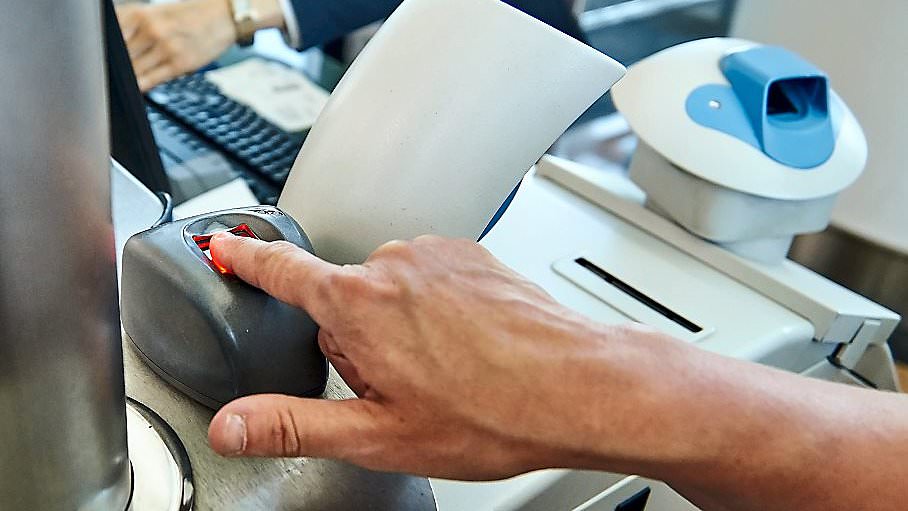Britons travelling to Europe without EU passports will be forced to have their fingerprints registered or their pictures taken on arrival from October.
The new strict entry and exit system (EES) will be launched in a ‘progressive’ manner across six months.
The EES was meant to launch on November 10 last year but was postponed due to fears of chaos at airports and ports.
After consideration The European Council and parliament have now agreed to launch the system, The Times reported.
‘We will no longer let the slowest pupils hold the whole class back,’ said Assita Kanko, the Belgian conservative MEP responsible for the EES system at the European parliament.
‘The safety of Europeans can no longer be postponed.’
While the roll out does begin in October, all countries will have to use the new system by the end of the following six-month period.
The EES has sparked concerns over travel chaos in airports and Germany, France and the Netherlands argued they were not ready at the time of the planned ‘big bang’ November launch.
The three countries – which handle a heft 40 per cent of all non-EU traffic into the bloc – said they struggled to install the IT infrastructure needed in time.
Ms Kanko insisted that ‘the EES is not just a security measure; it also aids legal travellers…with fewer queues and increased certainty.’
However, this claim of improved efficiency has been met with scorn by the travel industry – news of the scheme raised fears of queues and longer waiting times for people travelling to Europe on trains, ferries and planes.
Officials at the Port of Dover said they expect the processing time for cars to increase from one minute to up to seven minutes.
And last summer, they were bracing for delays of up to 14 hours when the EES was still going ahead in November as Kent County Council warned jams could be ‘much worse’ than 23-mile tailbacks seen in 2022.
The Department for Transport gave £10.5million for border upgrades like the huge processing area newly installed in Dover.
While the Eurostar terminal in Kings Cross, London, have built 49 kiosks for the EES before reaching security and the French frontier.
France said they would need more police at the border last year to avoid immigration chaos while airlines have already been warned that the new system could mean passengers could be held on planes to prevent overcrowding at European terminals.
EasyJet CEO Johan Lundgren warned last November that the new rules could leave British tourists stranded on planes, unable to disembark into packed EU terminals if the system was not guaranteed to function efficiently.
He called on the officials tasked with implementing the EES to develop a pre-registration system that would help frequent travellers to quickly pass the checks and facilitate speeding up the process.
The launch date for November was chosen over fears that the implementation any earlier would severely disrupt the two major sporting events last summer – the Rugby World Cup and the Paris Olympics.
But at the last minute, officials decided they still weren’t prepared enough.
It was the third time that the EES was postponed after its initial proposal in 2017 to replace manual passport stamping – or ‘wet stamping’.
Non-EU visitors can expect to be digitally monitored for the duration of their stay on the continent.
Currently, Brits can stay 90 days in the EU in a rolling 180-day period.
Once the EES has been taken up by all the countries, the European Travel Information and Authorisation System (Etias) will begin, where travellers will need to apply for a waiver before visiting.
This will be valid for three years or until a passport expires and it has been compared to the US Esta (Electronic System for Travel Authorisation).
Visitors will have to do this online and approval could take up to 30 days for complex applicants.
It will be free for children and the elderly but cost €7 for anyone aged between 18-70.
